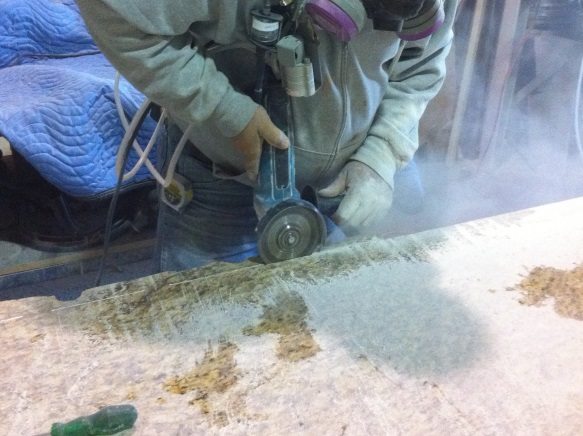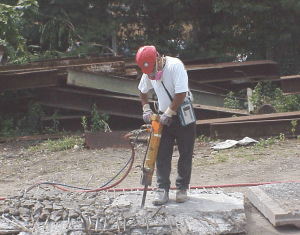The headline in the Chicago Tribune tells the story of the silica-standard saga and its major role players:
“Workers breathe easier over silica dust rules as construction industry winces.”
In a landmark rulemaking, OSHA last week issued long-awaited standards on workplace exposure to crystalline silica, updating a rule that had remained unchanged for 45 years in the face of a clamor to toughen the exposure limits from health and safety experts and trade union representatives. OSHA’s action reduced the permissible exposure limit (PEL) for respirable silica to 50 micrograms per cubic meter of air, averaged over an eight-hour day, from the existing PEL of 250 micrograms. (See OSHA issues silica rule.)
A long-overdue action, in the view of health and safety advocates; the original; the 1971 standard on silica exposure was considered outdated not long after it was issued by these advocates. Respirable crystalline silica is a cause of silicosis, lung cancer and kidney disease.
But construction-industry representatives were quick to decry the new rule. Industry trade group Associated General Contractors called the new standard “unattainable” and a “missed opportunity to effectively improve workplace health and safety.”
“Instead of crafting new and innovative ways to get more firms to comply with the current silica standard, which we know would save even more workers each year, administration officials appear to have instead opted to set a new standard that is well beyond the capabilities of current air filtration and dust removal technologies,” AGC said.
“Wishing firms could meet this new but unattainable standard will undoubtedly deliver many positive headlines for the administration, but it will be all but impossible for most construction firms to comply with this new rule.”
A year ago, a construction industry group called the Construction Industry Safety Coalition (CISC) issued the results of a study that said meeting the new OSHA standard would cost the industry $5 billion a year–$4.5 billion more than OSHA estimates.
Also voicing criticisms were the National Association of Home Builders, Associated Builders and Contractors, American Road and Transportation Builders Association, and other industry organizations. The organizations also point to major reductions in silica-related illnesses as evidence that industries have worked hard to reduce silica exposure.
But groups representing construction-industry unions loudly applauded the new standards.
“For too long, workers in the construction industry have been needlessly exposed to silica-related diseases,” said Terry O’Sullivan, general president of the Laborers’ International Union of North America (LiUNA).
“With implementation of this rule, millions of construction workers—including the hardworking men and women of LiUNA—will be safer on the job,” O’Sullivan said.
A statement issued by North America’s Building Trades Unions—an alliance of 14 national and international unions in the building and construction industry—said the coalition has been calling for finalization of the updated silica rule for 20 years “because reducing silica exposures will have a significant positive impact on the working conditions for all American construction workers.”
“It is beyond debate that silica exposure kills construction workers. It causes silicosis — a deadly lung disease — lung cancer, and other diseases,” the coalition said. “Silica-related diseases cannot be cured, but they can be prevented.
“Put simply, the OSHA silica standard will protect construction workers from getting sick or dying due to silica dust exposure.”
Detailed information on the new rules is available at OSHA silica webpage.





